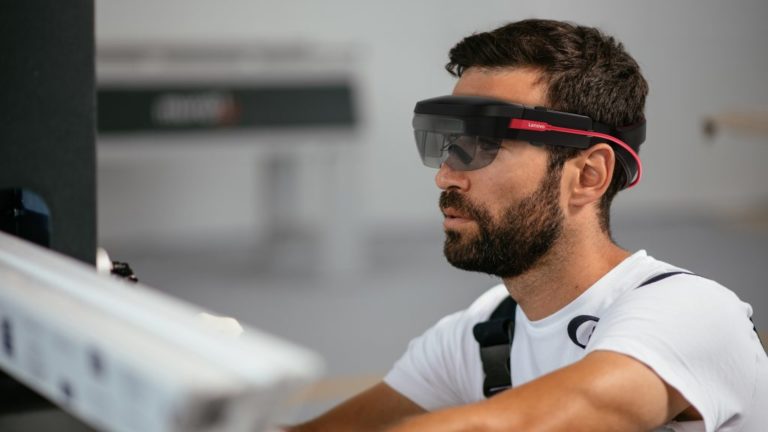
Though we spend ample time examining consumer-based XR endpoints, greater near-term impact is seen in the enterprise. This includes brands that use AR to promote products in greater dimension (B2B2C) and industrial enterprises that streamline their own operations (B2B).
These industrial endpoints include visual support in areas like assembly and maintenance. The idea is that AR’s line-of-sight orientation can guide front-line workers. Compared to the “mental mapping” they must do with 2D instructions, visual support makes them more effective.
And with VR, employee training and onboarding can be elevated through immersive sequences that boost experiential learning and memory recall. It also scales given that far-flung employees can get the same quality training, versus costly travel for senior training staff.
Altogether, there are micro and macro benefits to enterprise XR. The above micro efficiencies add up to worthwhile bottom-line impact when deployed at scale. Macro benefits include lessening job strain and closing the “skills gap,” which can preserve institutional knowledge.
But how is this materializing today and who’s realizing enterprise XR benefits? Our research arm ARtillery Intelligence tackled these questions in a recent report. It joins our report excerpts series, with the latest below on some of enterprise XR’s high-level drivers and dynamics.
More HR than XR
Picking up where the last part of this series left off, though XR carries ample opportunities and advantages in the enterprise, it’s not without challenges. Practical barriers include organizational inertia, internal politics, and fear of new technology among key stakeholders.
The biggest result of all the above is the dreaded “pilot purgatory.” This is when XR is adopted at the pilot stage, but never progresses to full deployment. There are many reasons for it, ranging from the tech itself to issues that have more to do with organization and culture.
Starting with the technology, enterprise XR should follow the fundamentals of product/market fit. Because it’s not a silver bullet, different flavors of XR implementation (e.g., AR guidance, VR training, etc.) should map to their strengths – a seemingly-obvious but often-ignored notion.
For example, AR guidance is effective in jobs that require direction for complex and non-repetitive tasks, such as large-equipment maintenance. It’s less effective in jobs that involve repetitive simple tasks – such as assembly line work. The latter is often where VR training is better.
On to the second category of enterprise XR roadblocks, sometimes it has little to do with the tech and more to do with organizational inertia and applying the art of change management. Put another way, adoption and implementation challenges are often more about HR than XR.
Know Your Audience
Sticking with that last point, just like HR is all about people and management, that is often where enterprise XR deployment tactics should focus. One example is how XR is sold into organizations, and then how its value proposition is relayed throughout the organization.
These steps require different messaging, but often they do not. For example, XR is often sold into an organization on its ROI merits that appeal to the C-suite. This includes metrics that support XR’s operational efficiencies, which is music to the ears of COOs and CFOs.
However, according to Boeing Technical Fellow Paul Davies during a panel discussion at AWE USA that we moderated (see above), front-line workers don’t care about unit economics. In fact, technologies claimed to improve efficiency can carry human-replacing implications.
Accordingly, XR’s value proposition should be reframed. Rolls Royce Chief Advanced Visualization Engineer Andrew Lowe said during the same AWE panel that value proposition can include things like improved job performance and reduction in job strain from reduced cognitive load.
Similarly, in “see what I see” remote AR assistance scenarios, XR can extend end users’ longevity by turning seasoned workers into subject matter experts who support field workers remotely – a less strenuous role. The point is, know your audience and speak their language.
We’ll pause there and pick it up in the next installment with more challenges facing Enterprise XR, and how some adopters are getting over the hump…

